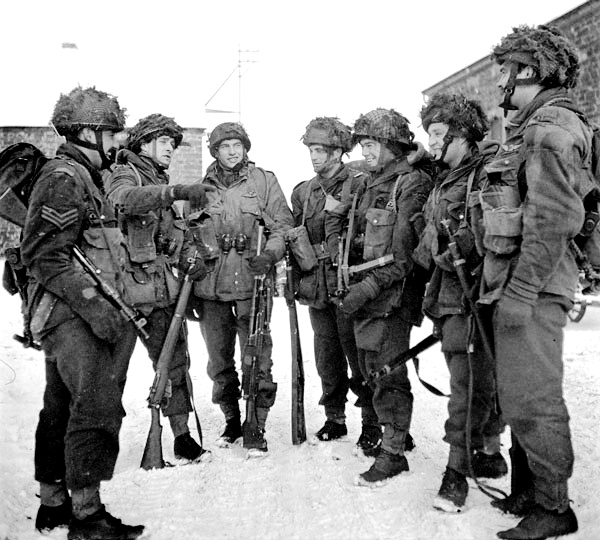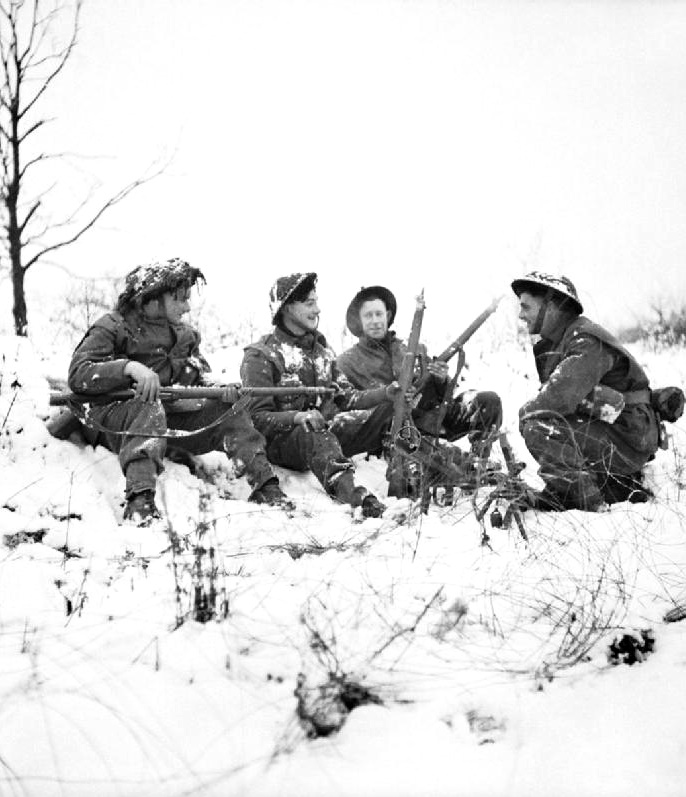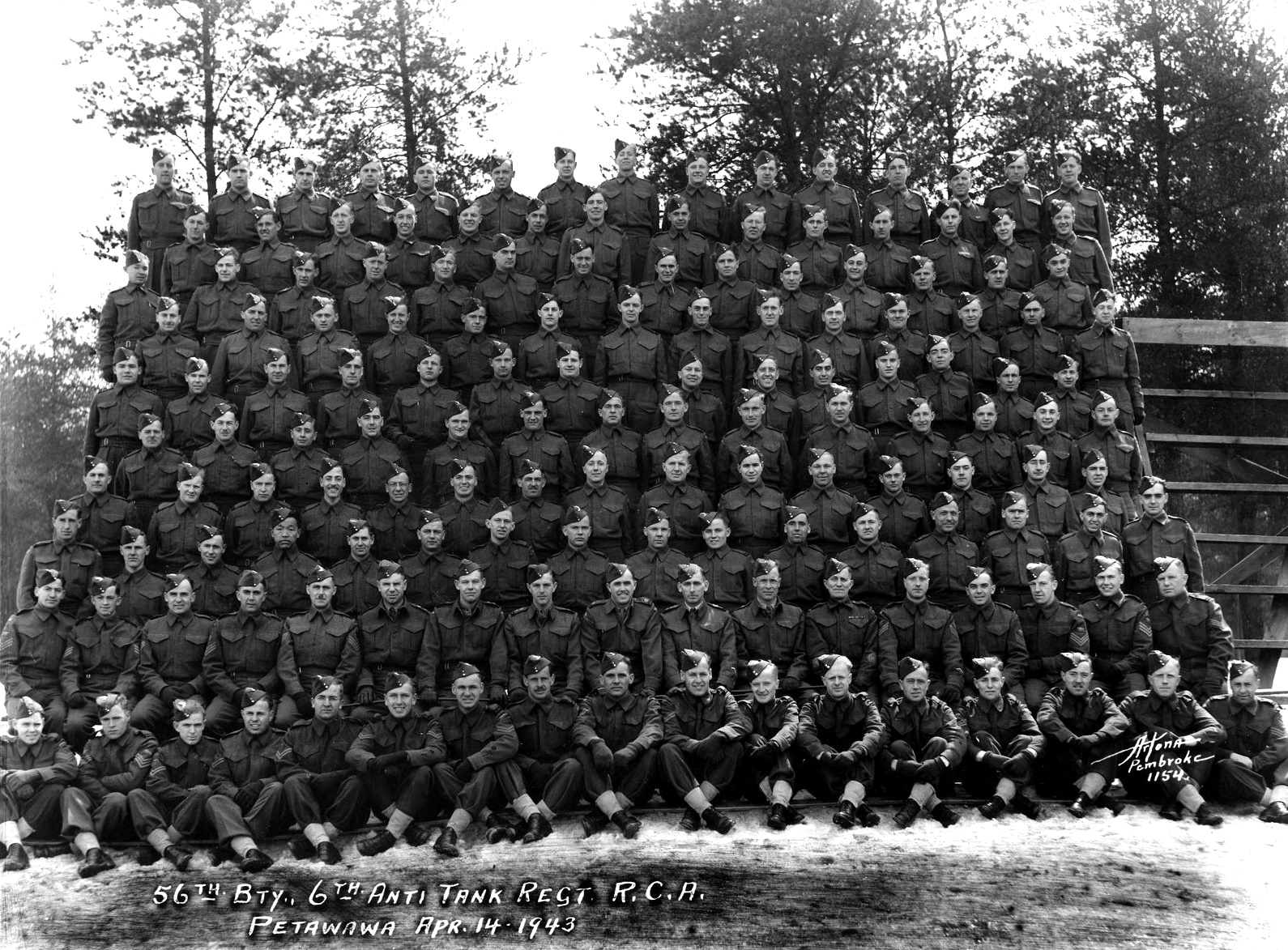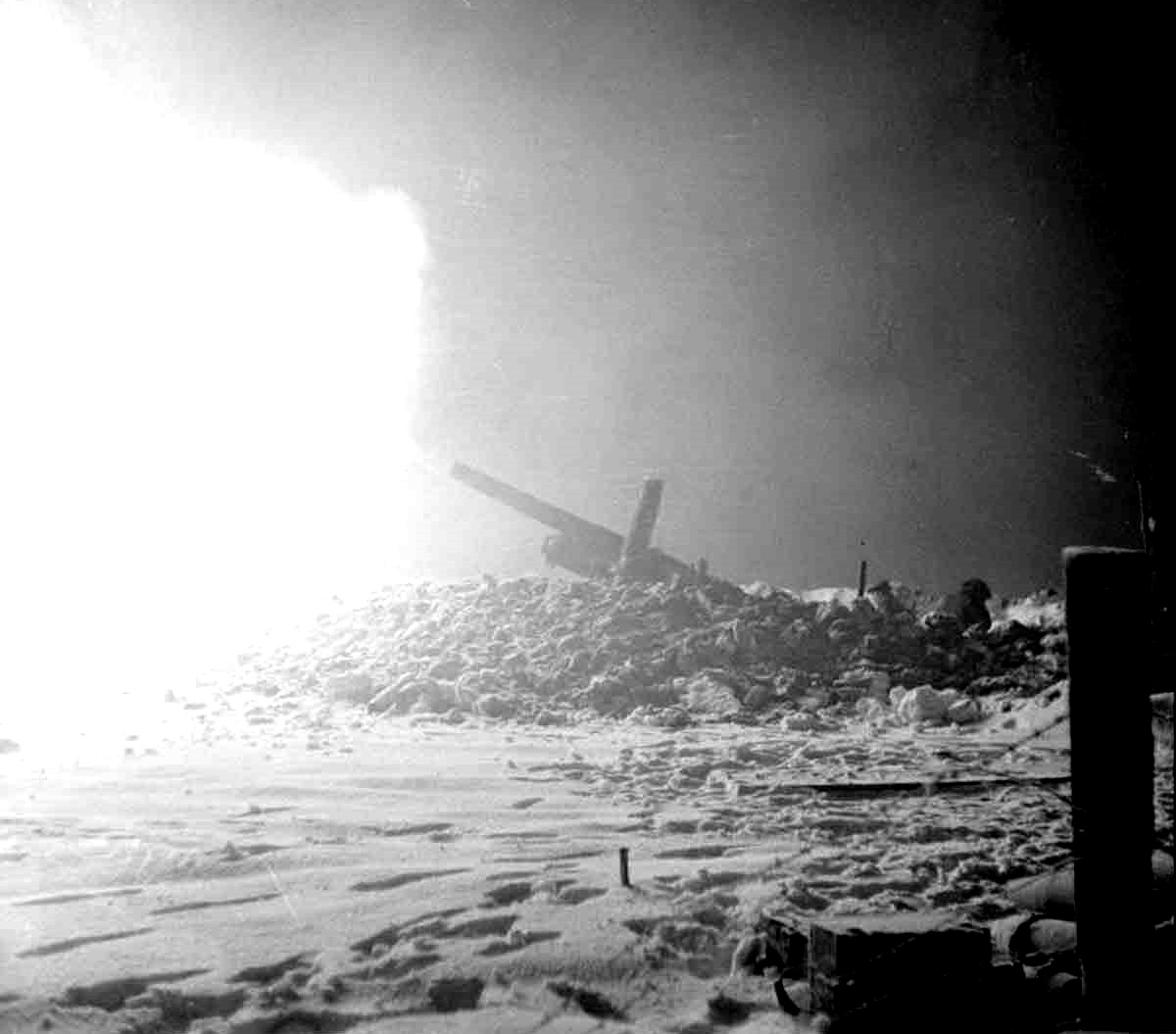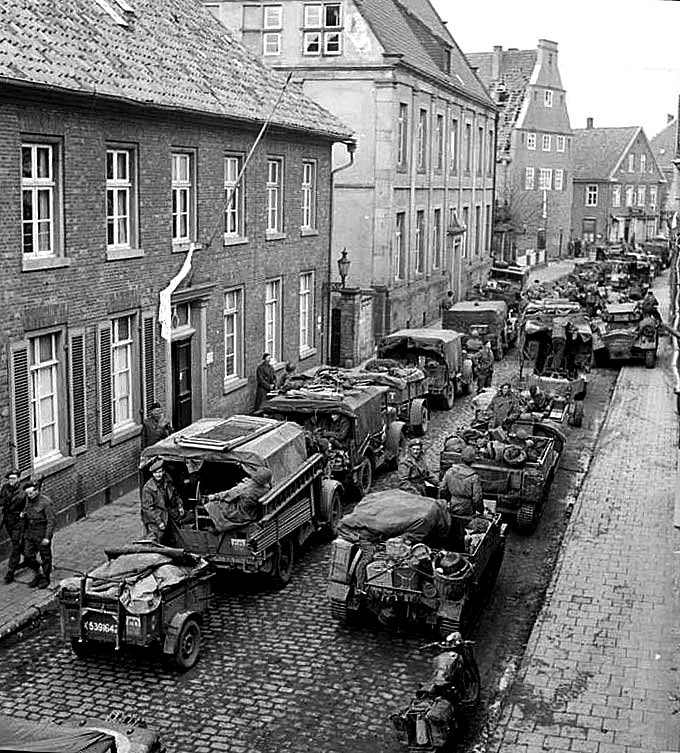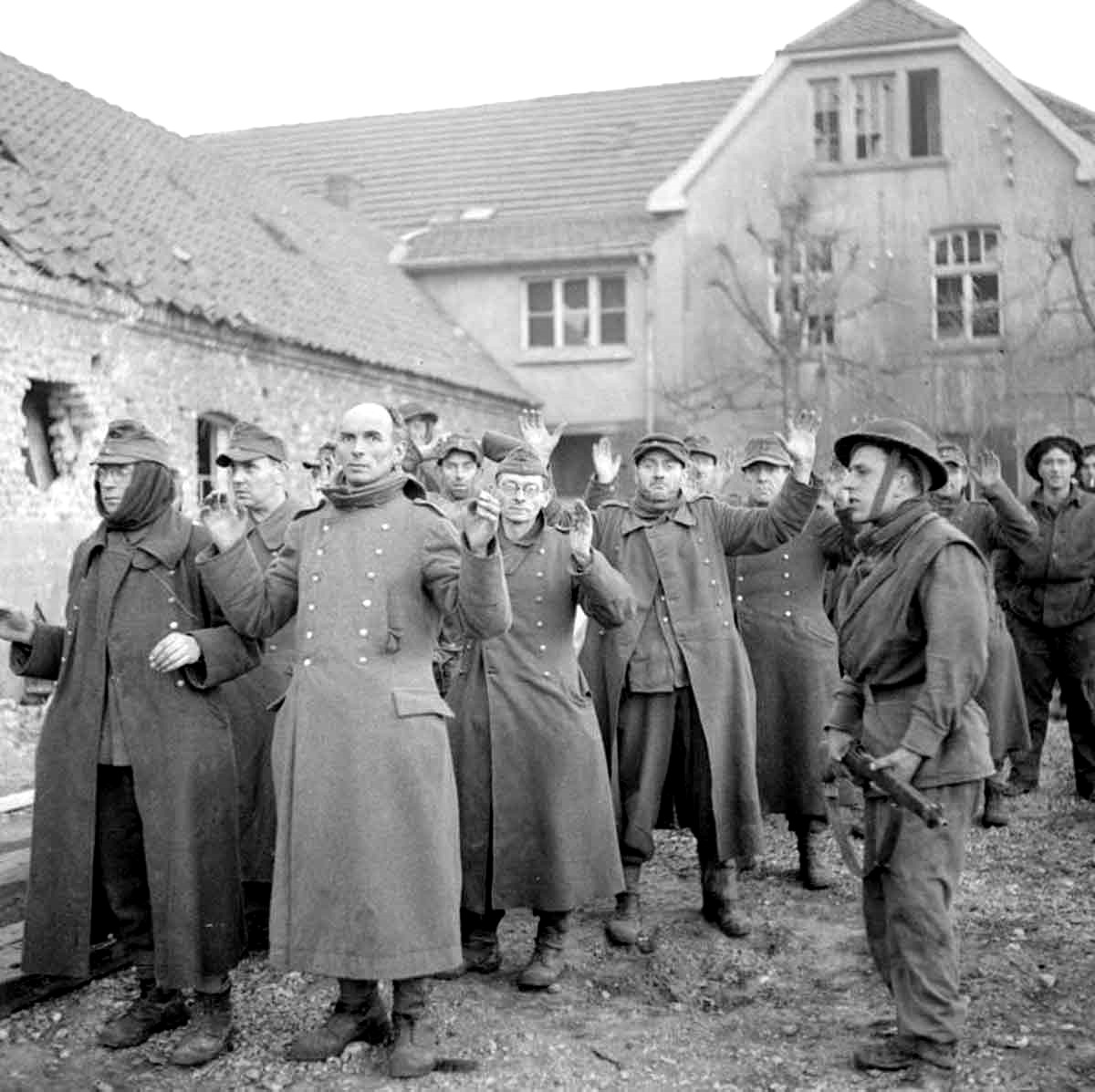(15) The enemy’s wedge separated the left flank of Gen Bradley’s forces so badly from his right that it was necessary to divide his command on December 19, allowing him to give full attention to the southern part of the salient. There, the 101-A/B, reinforced by armor, was given the task of holding Bastogne, the hub of seven highways and three railways, and maintained there a magnificent defense although completely surrounded for 5 days and under constant attack by forces many times superior in strength.

 All forces north of the Bulge, including the US 1-A and 9-A, were placed under the operational command of FM Bernard Montgomery, who concentrated the British 30th Corps in 3 strategic reserve position east of Brussels. The Krauts failed to reach even their initial objectives on the Meuse River, although they made a 45-mile gap and penetrated over 60 miles westward to within 4 miles of the Meuse River near Celles.
All forces north of the Bulge, including the US 1-A and 9-A, were placed under the operational command of FM Bernard Montgomery, who concentrated the British 30th Corps in 3 strategic reserve position east of Brussels. The Krauts failed to reach even their initial objectives on the Meuse River, although they made a 45-mile gap and penetrated over 60 miles westward to within 4 miles of the Meuse River near Celles.

 The Allied Forces brought the German counter-offensive under control by December 26, and shortly thereafter were able to resume the initiative with pincer-like attacks by the US 1-A from the north and the US 3-A from the south. It was at this stage that the British 6th Airborne Division was brought into action as part of the British 30th Corps, which Montgomery directed against the eastern edge of the Bulge between the major attacking forces.
The Allied Forces brought the German counter-offensive under control by December 26, and shortly thereafter were able to resume the initiative with pincer-like attacks by the US 1-A from the north and the US 3-A from the south. It was at this stage that the British 6th Airborne Division was brought into action as part of the British 30th Corps, which Montgomery directed against the eastern edge of the Bulge between the major attacking forces.

 It had not yet however, been possible to form a reserve American corps available for offensive operations in the US 1-A, and I now decided to commit the British troops south and east of the Meuse in order to relieve US VII Corps for the purpose. My plan was to employ the UK 30th Corps on the right flank of the US 1-A taking over the sector Givet, Hotton. The reliefs were to be completed by January 2, 1945, the British 30th Corps attacked on January 4, in a front of two divisions. In the south, the British 6th Airborne Division, which had been hurriedly brought over from the UK, had some fierce fighting in and ground Bure but secured the area on January 5, and on the left, the British 53d Division moved forward in touch with the US VII Corps.
It had not yet however, been possible to form a reserve American corps available for offensive operations in the US 1-A, and I now decided to commit the British troops south and east of the Meuse in order to relieve US VII Corps for the purpose. My plan was to employ the UK 30th Corps on the right flank of the US 1-A taking over the sector Givet, Hotton. The reliefs were to be completed by January 2, 1945, the British 30th Corps attacked on January 4, in a front of two divisions. In the south, the British 6th Airborne Division, which had been hurriedly brought over from the UK, had some fierce fighting in and ground Bure but secured the area on January 5, and on the left, the British 53d Division moved forward in touch with the US VII Corps.
(16) Proceeding inland by lorry from Ostende, the 1-CPB had been billeted first in Belgian villages around Taintignies, south of Tournai, and then approximately 70 miles east at Maredret, near Namur. This week of waiting ended on January 2, when the unit moved to Rochefort, a Belgian village on a tributary east of the Meuse River, and took up battle positions there in the familiar role of infantry of the line. The heavy fighting et Bure was approximately five miles south of the Battalion’s front, which remained comparatively quiet. That first day no activity was reported other than the capture of a solitary PW identified as a deserter from the 304.Regiment of the 2.Panzer-Division. Minor changes of position within the area were assumed from day to day without serious trouble, patrols by day and night often reporting no sign of the enemy. On January 3, Able Co met some slight opposition in an advance but reached its objective and the next day sent out a fighting patrol to clear the neighboring woods. This company had had a last-minute change of commander just before leaving England when Maj P.R. Griffin was left behind with a broken wrist, Capt J.A. Clancy taking command as A/Maj. Throughout this second period of active service for the Battalion, he led Able Co with the same gallantry which had previously won him the Military Cross in Normandy.
(17) Finding the enemy had withdrawn from the Rochefort area after the battle to the south at Bure, the Battalion made a minor change of location on January 6, to the village of Aye, just west of Marche-en-Famenne, but observation posts set up by the Intelligence Section revealed no signs of enemy activity. Three days later, the 1-CPB moved east of Marche to relieve the Highland Light Infantry at Champlon-Famenne, the companies immediately taking up positions for all-round defense. After a quiet night, the Battalion received orders to advance to Roy, which Baker Co attacked at 1100 and took unopposed, all enemies having withdrawn. No casualties resulted from this operation, although a recon patrol previously had been severely mortared by the Krauts. Defensive positions were taken up but patrols could not establish contact with the enemy. The following day, Baker Co took the neighboring village of Bande, also without opposition. The 1-CPB handed it over to the 9th Canadian Parachute Battalion. An entry in the unit was diary reports a gruesome discovery made there. 37 civilians were found beaten and shot to death in a cellar at Bande. One man from each Platoon in the Battalion was taken to Bande and shown the German cruelty.
German aircraft bombed and strafed the area near midnight on January 13, but patrols reported all enemy ground troops had fled and there was little to do but search for their abandoned equipment. While awaiting the end of the Battle of the Bulge, the 3rd Paratrooper Brigade held a winter sports meet at Roy on January 14, with toboggan races and contests in building snowmen, log sawing, and wood chopping. On January 18, the Battalion departed for a rest area at Pondrome, thus ending the first phase of its reintroduction to active operations.
(18) By then the junction of the US 1-A and US 3-A had enabled FM Montgomery to dispense with the British 30th Corps as a buffer between them.
I undertook the withdrawal of the British troops from the Ardennes with the greatest possible speed, in order to regroup for the Battle of the Rhineland. Now was the opportunity to proceed with the utmost dispatch to carry out our plans, in order to take full advantage of the enemy’s failure. The enemy had been prevented from crossing the Meuse in the nick of time. The battle displayed many fine examples of Allied solidarity and teamwork. In particular, the passage of the British 30th Corps across to the south flank of the US 1-A and US 3-A, and its subsequent deployment east of the Meuse was an operation of tremendous complications achieved without serious difficulty. (FM Montgomery).
 Formations of 1st Canadien Army in Holland, although profoundly affected by the Ardennes counter-offensive, had not been required to assist directly in repelling it. Certain units of the Canadian Forestry Corps (HQs 8th Canadian Forestry District with under command Nos. 1, 9, 14, 16, 25, and 27 Companies), which had been cutting timber in the Ardennes Forest since November 1, 1944, were placed on Stand To but soon received orders to withdraw to Brussels. The 1-CPB, therefore, had the honor of being Canada’s sales representative unit to close with the enemy in that important battle. The 56th Btry, 6th AT Regt, RCA, was placed under the command of the 51st (Highland) Division from approximately December 25, 1944, to January 15, 1945, but does not appear to have been called upon to play an active part in the Ardennes Campaign. This division was then in a reserve role as part of the US 1-A and the 56th Battery acted as a Division Antitank reserve. An undated sitrep of the 56th Battery states regarding this period, as Division reserve we have carried out extensive recons in this area but no guns have been deployed).
Formations of 1st Canadien Army in Holland, although profoundly affected by the Ardennes counter-offensive, had not been required to assist directly in repelling it. Certain units of the Canadian Forestry Corps (HQs 8th Canadian Forestry District with under command Nos. 1, 9, 14, 16, 25, and 27 Companies), which had been cutting timber in the Ardennes Forest since November 1, 1944, were placed on Stand To but soon received orders to withdraw to Brussels. The 1-CPB, therefore, had the honor of being Canada’s sales representative unit to close with the enemy in that important battle. The 56th Btry, 6th AT Regt, RCA, was placed under the command of the 51st (Highland) Division from approximately December 25, 1944, to January 15, 1945, but does not appear to have been called upon to play an active part in the Ardennes Campaign. This division was then in a reserve role as part of the US 1-A and the 56th Battery acted as a Division Antitank reserve. An undated sitrep of the 56th Battery states regarding this period, as Division reserve we have carried out extensive recons in this area but no guns have been deployed).
Operations in Holland
(19) With von Rundstedt’s striking power expended, the task of Gen Eisenhower now, was to re-grasp the strategic initiative and resume the advance. In planning our forthcoming spring and summer offensives, I envisaged the operations which would lead to Germany’s collapse as falling into three phases: the first, the destruction of the enemy forces west of the Rhine River and closing to that river; the second, the seizure of bridgeheads over the Rhine from which to develop operations into Germany; and the third, the destruction of the remaining enemy east of the Rhine and the advance into the heart of the Reich. (Eisenhower)
Forces were regrouped and the major thrust was made from the north, where the British 21-AG planned Operation Veritable and Operation Grenade to smash the enemy west of the Rhine. For this battle of the Rhineland, the British 6-A/B left the British 30th Corps and was assigned a holding role as part of the British 8th Corps within the British 2-A, to whom FM Montgomery had given certain responsibilities. The 2-A (UK) was to hold a firm front on the Meuse River facing east and to assist the Canadian operations by every means possible. At this stage of planning, I envisaged the 2-A (UK) crossing the Meuse to secure Venlo as part of Operation Veritable, though later this was canceled because it proved unnecessary. (Montgomery)
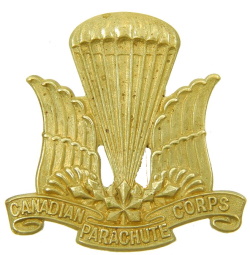 (20) The 1st Canadian Parachute Battalion was permitted to remain in its rest area at Pondrome, Belgium, less than four days before being ordered to proceed to the Netherlands. (This brief pause in the winter campaign permitted all ranks to attend bath parades, draw clean clothing, and enabled the quartermaster to issue rubber boots and leather jerkins in preparation for rigorous field conditions. On January 22, the Battalion traveling all day by lorry, traversed the US 9-A area to reach the Dutch village of Roggel. Front-line positions on the west bank of the Meuse River were taken over from elements of the British 15th Infantry Division the next morning, with the 1-CPB established at Haelen and the rifle companies in three neighboring villages: Able Co forward at Buggenum, Baker Co on the right at Broek, and Charlie Co on the left at Nunhem. Across the river, the Siegfried Line extended along a slight lip that overlooked the valley, and continuous trench systems stretched along the east bank connecting the strongly fortified areas of Venlo to the north and Roermond to the south.
(20) The 1st Canadian Parachute Battalion was permitted to remain in its rest area at Pondrome, Belgium, less than four days before being ordered to proceed to the Netherlands. (This brief pause in the winter campaign permitted all ranks to attend bath parades, draw clean clothing, and enabled the quartermaster to issue rubber boots and leather jerkins in preparation for rigorous field conditions. On January 22, the Battalion traveling all day by lorry, traversed the US 9-A area to reach the Dutch village of Roggel. Front-line positions on the west bank of the Meuse River were taken over from elements of the British 15th Infantry Division the next morning, with the 1-CPB established at Haelen and the rifle companies in three neighboring villages: Able Co forward at Buggenum, Baker Co on the right at Broek, and Charlie Co on the left at Nunhem. Across the river, the Siegfried Line extended along a slight lip that overlooked the valley, and continuous trench systems stretched along the east bank connecting the strongly fortified areas of Venlo to the north and Roermond to the south.
The enemy held both these strong points, but south of the latter had been forced by the British 12th Corps (UK 2-A) to retreat across the Roer River, which joins the Meuse River from the southeast at Roermond. The US 9-A had taken over this Roermond triangle, from which it was intended to launch Operation Grenade on February 10. Away to the south, however, the Germans by releasing a huge volume of water from a dam on the upper Roer caused it to overflow its banks along the entire front of the 9-A. Therefore the 1st Canadian Army was forced to be in Operation Veritable in the north on February 8, without supporting attacks.
(21) While stirring events were happening on the right and the left of the UK 2-A, the 1-CPB had to be content with the holding role demanded of its central position. Enemy shells and rockets fell into the unit area time after time yet caused surprisingly few casualties. Sporadic exchanges of mortar, rifle and LMG fire were a daily occurrence, also without major damage. A standing patrol of Baker Co, located near a railway bridge (774933), repeatedly came under heavy enemy fire of all types in the first few days. Soon an enemy observation post was discovered directly across the river at that point and thereafter was given a daily drubbing by machine gunners and snipers, aided one day by a number of rounds from a Sherman tank. On February 1, a German raiding party ventured across the Meuse to attack a standing patrol of Able Co at 0200, wounding two men but losing a prisoner of war. Almost every night the enemy lighted up the front with flares as though expecting attacks himself, and frequently during the day he could be seen digging trenches to improve his defensive position. Members of the Royal Engineers passed through the unit lines on January 25, and January 29, to reconnoiter the banks of the Meuse for a possible crossing, the Battalion afforded protective troops, but in view of the changed plan, no attempt was made to cross in force in that particular area.
(22) Active patrolling across the Meuse was definitely a major part of the 1-CPB’s duties, however, in accordance with instructions given to British 2-A by the Commander in Chief. A very thorough watch will be kept on the enemy on the east bank of the Meuse and every opportunity will be taken to harry and alarm him by means of patrols, raids, etc, and to establish bridgeheads where, and when, suitable (21-AG Operational Directive January 21, 1945). On January 29, Lt J.L. Davies with two other ranks crossed the river on a recon patrol that lasted 36 hours, observing the enemy without interference and returning without casualties. Patrols sent across the Meuse on February 3, met no enemy opposition but the next night one encountered an enemy section so strong that the patrol commander dared not interfere. On February 7, a fighting patrol of 30 other ranks commanded by Lt A.J.C. Estling crossed to the east bank and entered the village of Einde, opposite Able Co’s location, but encountered no enemy opposition whatsoever. On February 10, Lt D.J. Proulx led another recon patrol across the Meuse for 36 hours, carrying a #38 wireless set for communication purposes.
Two nights later the enemy retaliated by sending a patrol of their own against Baker Co, wounding one man but retiring to their own side before morning. On February 13, one enemy patrol consisting of 6 men was seen crossing toward Able Co. They were immediately covered by LMGs which later opened fire and caused the boat to capsize. The enemy heard screaming in the water and was believed to have been wounded. Able Co promptly dispatched a patrol of its own across the river but it met stiff opposition and was forced to retire, returning to make another attempt also without success. That night a considerable number of flares were reported and machine gun fire was quite heavy. The next day the Meuse was observed to be rising very rapidly, and active patrolling by both sides ceased.
(23) As the floodwaters rose the enemy fire noticeably decreased and the front held by the 1-CPB became extremely quiet. Fighting was heavy to the north, however, where the 1st Canadian Army cleared the Reichswald Forest by February 13, and the next day reached the Rhine River near Emmerich. When the Roer floods had passed their peak, Operation Grenade was launched from the south on February 23. The US 9-A in its sweep northward found Roermond abandoned by the Germans on March 1, and pushed on to Venlo, making two days later, contact with the 1st Canadian Army. The success of the combined Veritable–Grenades Operations removed all opposition west of the Rhine and inflicted crippling losses on the enemy.
(24) The 1-CPB once again had shared in a major engagement, fulfilling a very useful function in helping to hold a vital part of the front line in the center until the Allies could deliver smashing blows from the left and right. As soon as the former had broken through and while the latter was held poised, relief for the unit was forthcoming. Rumors of a possible return to England began on February 15, when all personnel of the Battalion was asked for sizes of dress shirts and boots. The next day they heard that American forces would relieve the unit, whose future employment was a matter of considerable conjecture. On February 18, the American advance party arrived at 1000 and the Canadian advance party departed two hours later. The next day the main body of US troops arrived at 1300 to take up positions, the 1-CPB leaving at once to em-bus at Roggel for a staging camp at Zeveneecken, Belgium. Personnel of the rifle companies sailed from Ostende on February 21, while Battalion Hq and Hq Co flew from Nivelles the following day. By February 23, they were together again in their old quarters at Carter Barracks, Bulford.
(25) Thus ended the second period of active service on Europe’s battlefields by the 1-CPB. After three months of fighting in Normandy, the unit had added to its credit almost two additional months of campaigning at the front in Belgium and in the Netherlands, and now was spoiling to make another parachute descent like that of D-day.







